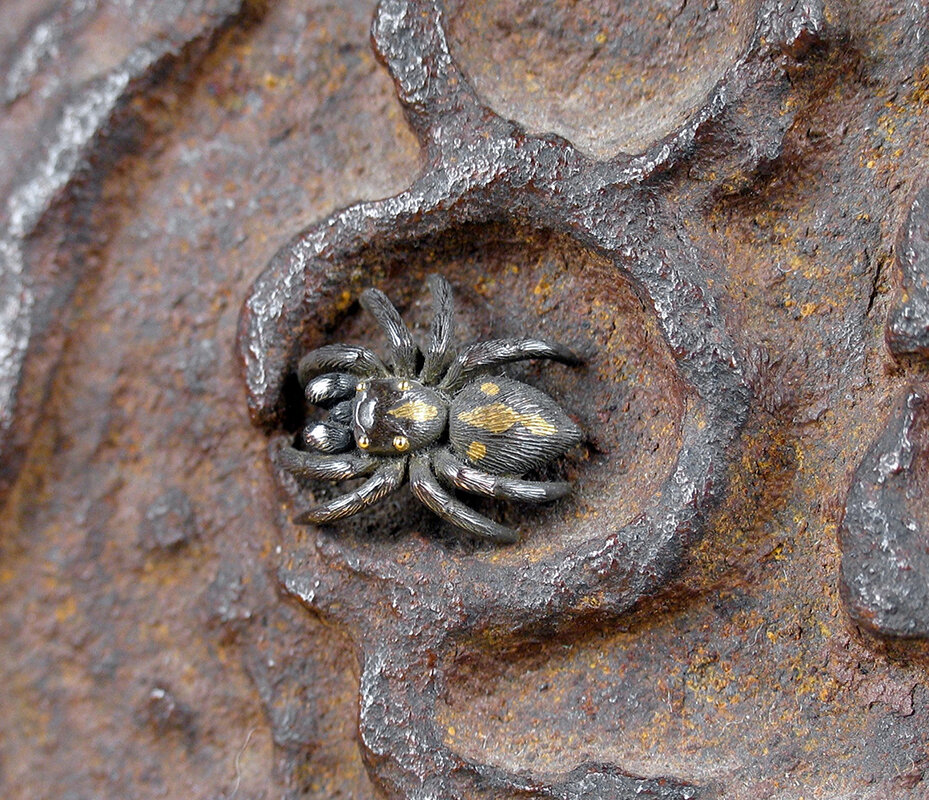MEIJI-TAISHO
SHAOMI KATSUYOSHI, KORO WITH PIGEON & SPIDER ON ROOFTILE
Koro or incense burner in the form of an ancient Chinese roof tile with a small spider on the side, which has caught the eye of a pigeon perched above. The roof tile of hammered iron, the incense well of hammered silver, the spider of shakudo inlaid in gold, the pigeon of hammered silver inlaid in shakudo, red bronze, and gold. The pigeon signed with a chiseled signature on the underside of the tail feathers: Shoami, and the roof tile signed with an inlaid gold signature on the reverse: Katsuyoshi (Shoami Katsuyoshi, 1832 – 1908). Late Meiji era, circa 1890 – 1908.
With a niju-bako or original double box, inscribed on the exterior of the inner box lid: Kan no Dai Raku Utsushi, Ko Kawara Hato Koro or Copy of a Han Dynasty Ancient Roof Tile (and) Pigeon Incense Burner; and on the reverse of that lid with a description of the techniques used in making the piece and signed: Made and Titled By Shoami Katsuyoshi, and sealed: Katsuyoshi.
Born in Tsuyama in Okayama Prefecture to a family of metalworkers for the Matsudaira family, Shoami Katsuyoshi began to study metal arts at the age of thirteen, and five years later he was adopted into the Shoami family of Okayama. He studied Goto school metalworking under his brother Nakagawa Issho (1839 – 1876), who was a pupil of Goto Ichijo. Originally a maker of sword-fittings, he shifted to other forms of metalwork after the end of the Edo period. During the Meiji era his work won many prizes in both domestic and international exhibitions.
For other examples of his work in the Nasser D. Khalili Collection, c.f. Meiji no Takara, Treasures of Imperial Japan: Metalwork, Part 1, numbers 7 and 8.
Shaomi Katsuyoshi, Koro with Pigeon & Spider on Rooftile
Artist Name: Shaomi Katsuyoshi
Period: Meiji Taisho
Mediums: Metalwork
Form: Koro or Incense Burners
Origin Country: Japan
5 ½” high x 5” wide x 5 ¼” deep
This piece is no longer available.








